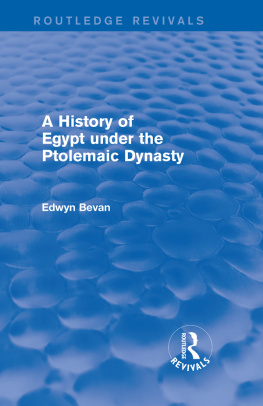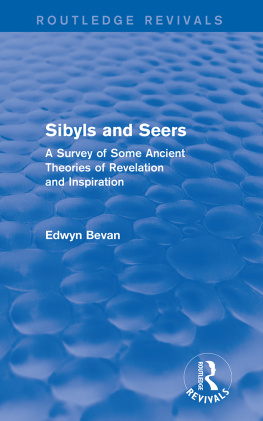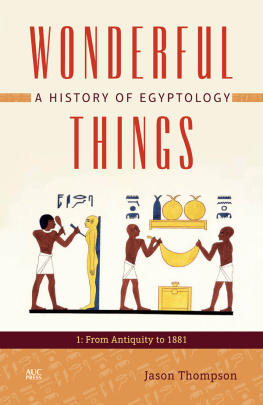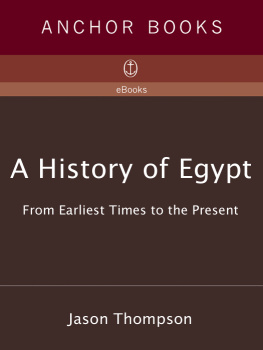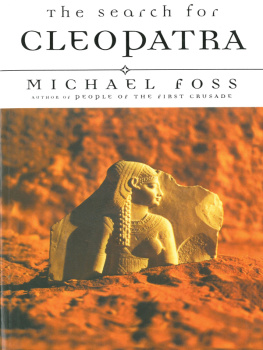Routledge Revivals
A History of Egypt under the Ptolemaic Dynasty
First published in 1927, this title presents a well-regarded study of this intriguing and often over-looked period of Egyptian history, both for the general reader and the student of Hellenism.
Edwyn Bevan describes his work as an attempt to tell afresh the story of a great adventure, Greek rule in the land of the Pharaohswhich ends with the astounding episode of Cleopatra. The result is a remarkable synthesis of historical scholarship, prose style and breadth of vision, which will still prove to be of value to Egypt enthusiasts and students of Egyptology.
First published 1927
by Methuen & Co. Ltd
This edition first published in 2014 by Routledge
2 Park Square, Milton Park, Abingdon, Oxon OX14 4RN
and by Routledge
711 Third Avenue, New York, NY 10017
Routledge is an imprint of the Taylor & Francis Group, an informa business
1927 Edwyn Bevan
All rights reserved. No part of this book may be reprinted or reproduced or utilised in any form or by any electronic, mechanical, or other means, now known or hereafter invented, including photocopying and recording, or in any information storage or retrieval system, without permission in writing from the publishers.
Publishers Note
The publisher has gone to great lengths to ensure the quality of this reprint but points out that some imperfections in the original copies may be apparent.
Disclaimer
The publisher has made every effort to trace copyright holders and welcomes correspondence from those they have been unable to contact.
A Library of Congress record exists under LC control number: 28017007
ISBN: 978-1-138-02380-2 (hbk)
ISBN: 978-1-315-77371-1 (ebk)
Additional materials are available on the companion website at
[http://www.routledge.com/books/series/Routledge_Revivals]

This book, first published in 1927, replaces
a previous work of the same title by the
late J. P. Mahaffy, M.A., Litt.D., published
in March 1899, of which a second
edition, revised and enlarged, zvas issued
in February 1914
PREFACE
S INCE the issue of Mahaffys History of Egypt under the Ptolemaic Dynasty twelve years ago, research and study have gone steadily on, and new material (papyri and inscriptions) been brought to light. Mahaffys volume no longer in 1927 suffices to inform an English reader what is known, or believed, about Ptolemaic Egypt by those who speak with authority in this field of studies. It appeared, therefore, to Messrs. Methuen that vol. iv. in Sir Flinders Petries History of Egypt should be revised or re-written so as to correspond more nearly with the present state of knowledge, and Dr. Mahaffy being no longer here to remodel his own work, they placed the volume in my hands, asking me either to modify and expand it, or write another volume to replace it in the series. It was almost immediately evident to me that to insert bits of my own writing into a book by Mahaffy was out of the question. Mahaffys style is so fresh and personal that it would be like trying to insert into a living body new pieces of something different which it could not assimilate. There was no possible course but to write the whole story over again in my own way, bringing in occasionally phrases and paragraphs from Mahaffys book, where they seemed appropriate; these I have put between inverted commas and distinguished by an M. One advantage of this course was that my new volume would so avoid any appearance of thrusting Mahaffys aside. Mahaffys work will still retain its individual value for students of Ptolemaic history. If its statements and speculations may often have to be rejected in the light of more recent knowledge, the comments of his vigorous and realistic mind on the story, the living mode of presentation, will still probably twelve years hence make it worth while for students to turn back to Mahaffys History, when my volume, issued in 1927, will be as out of date as Mahaffys is to-day. In the course of my book I have thought it right to note points on which MahafTy seems definitely mistaken. That might give some readers the impression of a desire in the writer of the present volume to catch his predecessor out, which is far from my thoughts. If I oftener refer to Mahaffys work to correct it than to express my obligations to it, that is only because a reader may be trusted to learn for himself from Mahaffy where he is right, and has need to be cautioned only where further inquiry has shown Mahaffy to have been wrong. No one who works in this field can help feeling how much all scholars must owe to-day to the stimulus which a generation ago was given to the study of the Hellenistic age by Mahaffys vivid intelligence and large discursive erudition.
To-day those who are drawn to Ptolemaic Egypt may take as the foundation of their studies the great work of Bouch-Leclercq, the Histoire des Lagides, in four volumes (1903 to 1906), supplemented in some points by his later Histoire des Sleacides (191314). Bouch-Leclercq gives us an indispensable summary of the results of research concerning the two great Hellenistic kingdoms up to the date at which he wrote, illuminated by his own fine critical judgment, and as a man of letters who inherits the tradition of French historical prose, he tells the story in a way which makes it a delight, and not a weariness, to read him. For the special department of the papyri, and the knowledge they give us of life and government in Egypt under the Ptolemies, students have as their fundamental text-book the Grundzge und Chrestomathie of Wilcken and Mitteisthe first volume, by Wilcken, giving a general exposition of papyrology and an account of the Ptolemaic system of government, the second volume by Mitteis dealing with law and justice. Ulrich Wilcken, one of the great scholars whom Germany has given the world in this generation, speaks with an authority which few other men possess, in anything which has to be with papyrological studies. The edition of the Ptolemaic papyri, chronologically arranged, which he is now bringing out, volume by volume (Urkunde der Ptolemerzeit), embodies the results of a lifetime devoted to this special field. For questions of chronology the book by Max. L. Strack, Die Dynastie der Ptolemer (1897), puts the data together so far as they were known twenty-nine years ago, and reference to this book is still essential in any further discussions of Ptolemaic chronology. Strack was one of the European scholars killed in the Great War. All the more important Greek inscriptions of Ptolemaic Egypt known twenty-one years ago were collected in Dittenbergers Orientis Grcc Inscriptiones. One of the most generally useful contributions to papyrological studies made in recent years is Schubarts Einfhrung in die Papyruskunde (1918); his Geschichte gyptens von Alexander bis Mohammed (1922) gives a readable and graphic account for the general public, without references or notes. No attempt could be made here to give a list of all the other living scholars who have edited new-found papyri or elucidated particular questions connected with Ptolemaic Egypt; those who desire a complete survey of papyrological literature may consult the bibliographies in the Grundzge or in Schubarts Einfhrung, and supplement them, for more recent publications, by the surveys which Mr. H. I. Bell contributes to the Journal of Egyptian Archology. One may only notice that there is a very active school of papyro-logical studies in Italy with which the names of many young scholars of distinction are connected, whilst Italy has only just lost the veteran Giacomo Lumbroso, whose book,

